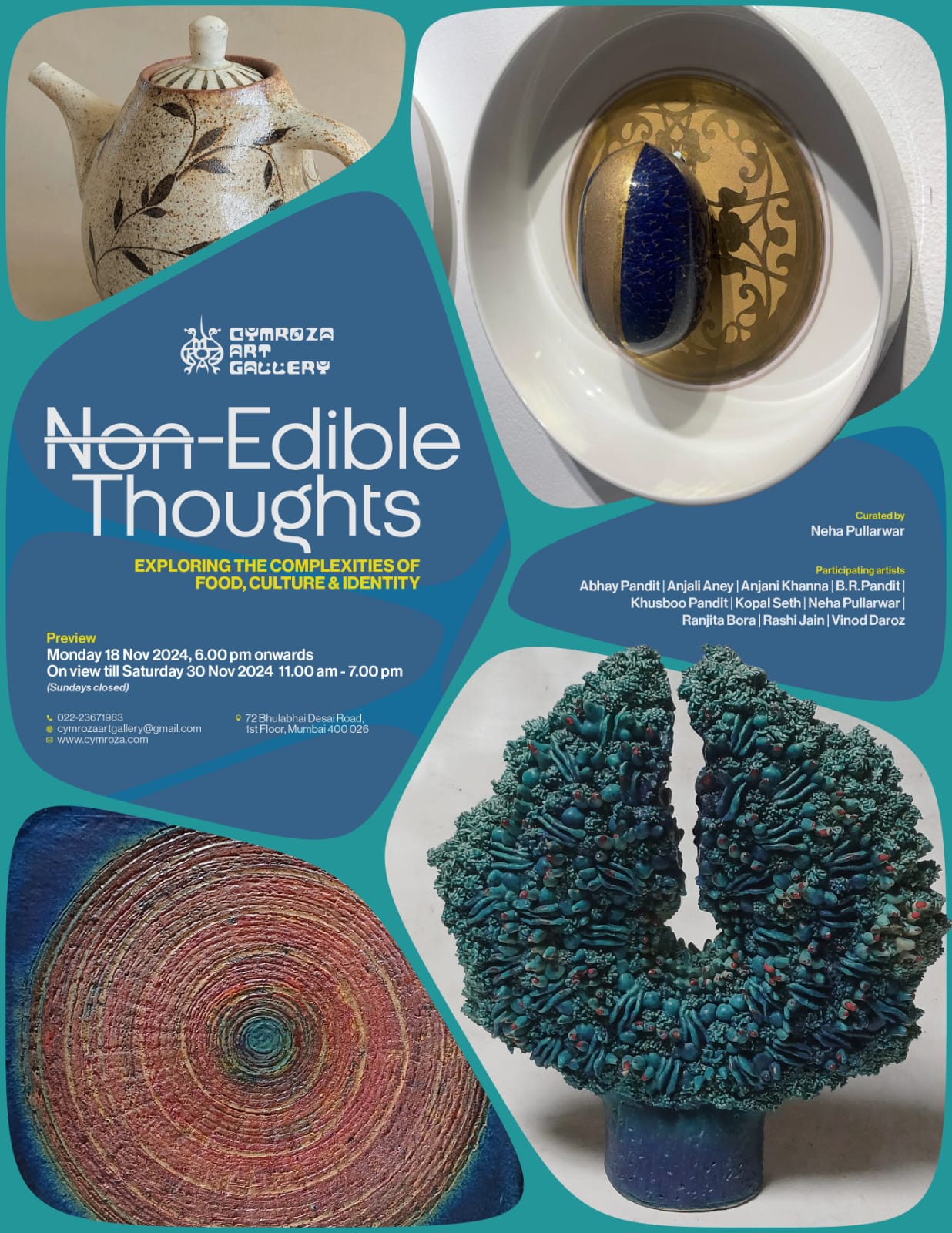17th Nov 2024 - 30th Nov 2024
Non-Edible Thoughts
Group Exhibition

Non-Edible Thoughts: Exploring the Complexities of Food, Culture, and Identity
Our relationship with food is complex, reflecting cultural, social, and emotional influences tied to our identities and values. As technology advances with genetically modified organisms (GMOs) and food cloning, our understanding of what we eat grows more intricate. Food is not only sustenance but also a medium through which we express heritage, beliefs, and social connections.
Cultural backgrounds significantly shape food choices, especially for immigrants who rely on traditional foods as a connection to their heritage. These foods provide comfort and a sense of belonging, preserving cultural identity in a new environment. Many immigrants seek specific spices or preparation methods reminiscent of home, creating continuity between past and present. Yet, globalization has transformed the culinary landscape, making once-exotic ingredients available worldwide and promoting hybrid dishes. This blending of cuisines enriches our palates but can also dilute traditional practices, raising questions about how to appreciate diverse foods while respecting their cultural origins.
Perceptions of what is edible vary widely across cultures, influenced by emotional and symbolic associations. Horsemeat, for instance, is a common protein source in some regions but taboo in others. Similarly, while insects are commonly eaten in many cultures, they are often rejected in Western societies. This reluctance is rooted in cultural beliefs and norms, illustrating that food choices are shaped not only by nutritional value but also by societal values.
Religious beliefs are also significant in shaping dietary practices and restrictions. For example, Muslims fast during Ramadan, a practice that promotes community and spiritual reflection. Many Jews adhere to kosher laws that specify what foods can be eaten and how they should be prepared. Even within the same faith, dietary practices can vary—some Jewish individuals follow strict kosher laws, while others are less observant. These variations highlight the complexity of food as both a cultural and spiritual symbol.
Food etiquette further underscores cultural differences, influencing not just what we eat but how we eat. Western societies might emphasize table manners involving forks and knives, while eating with fingers or chopsticks is the norm elsewhere, each carrying cultural significance. The act of eating itself can hold cultural meaning: in some cultures, leaving a small amount of food may signify satisfaction, while in others, a clean plate indicates enjoyment. These nuances in food etiquette reflect cultural identity and social norms.
In conclusion, food is a powerful means of expressing identity. "Non-Edible Thoughts" invites us to appreciate the complexities of our culinary choices and the rich cultural narratives they carry. As we explore the intersections of food, culture, and identity, we gain a deeper understanding of diverse perspectives, recognizing food as more than sustenance—a canvas for our cultural stories and shared human experiences.
It’s an inquiry in literal as well as metaphorical structure, where food or any such practice, culture, rituals or tradition that an individual came across which was difficult to gulp down but was eventually welcomed have been put together through the exhibits.